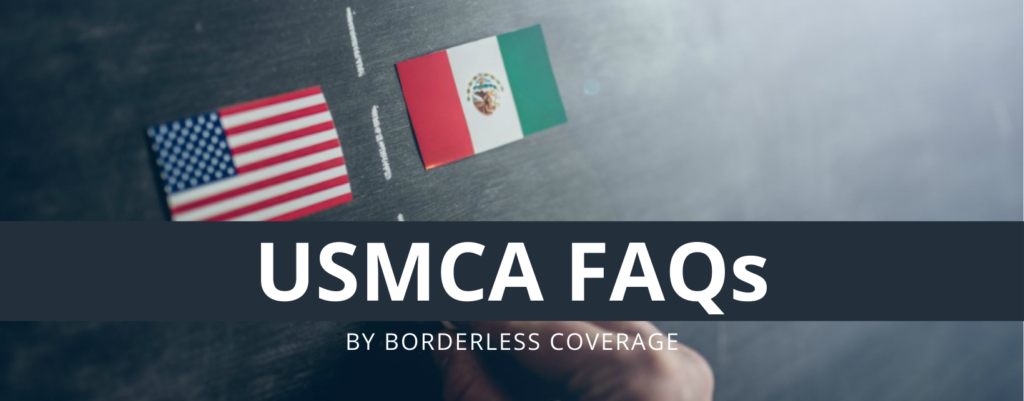Blog
USMCA FAQs

When it comes to USMCA, it can be a lot to digest. We have compiled a list of the most common questions we receive regarding USMCA at Borderless Coverage.
What are the Requirements of USMCA?
The nine requirements are listed at the end of Chapter 5 of USMCA. The title of this section is ‘ANNEX 5-A MINIMUM DATA ELEMENTS’ and can be found directly at that link. Bullets of the minimum data elements are included below for your convenience.
- Importer, Exporter, or Producer Certification of Origin
- Certifier
- Exporter
- Producer
- Importer
- Description and HS Tariff Classification of the Good
- Origin Criteria
- Blanket Period
- Authorized Signature and Date
Is there a form I can fill out when completing this?
Unlike NAFTA, USMCA does not require one specific type of form for those completing the Certification of Origin.
What is the advantage of completing the Certification of Origin?
USMCA allows those who complete the Certification of Origin form to qualify for preferential tax treatment under the Agreement. The main benefit of qualifying for this is financial reward when shipping goods across North American borders.
Who should be completing this form?
When completing the Certification of Origin, there must be a designated certifier, or someone who fills out the form as well as signs it. The certifier may be the exporter, importer, producer, or another party brought into the transaction. One of the nine requirements is to specify this certifier before any other parties involved are specified. Recording the certifier’s name, title, address, telephone number, and e-mail address is necessary before the completion of the form.
How should the description of the goods look and what is the HS Tariff Classification code?
USMCA does not specify a format or uniform way of completing the description of goods. The agreement says, ‘the description should be sufficient to relate it to the good covered by the certification.’ As for the HS Tariff Classification code, this is a six-digit number that helps customs classify the item and save time when shipping goods. The code being used depends on the product type which can be determined by Borderless Coverage.
How do you know if you are filling out the form correctly?
Working with Borderless Coverage and their team of experts helps facilitate the exchange of information along all parties involved with importing the goods. Making Borderless Coverage the certifier can save time and help guarantee that all data elements required to meet the preferential tax treatment are present.
